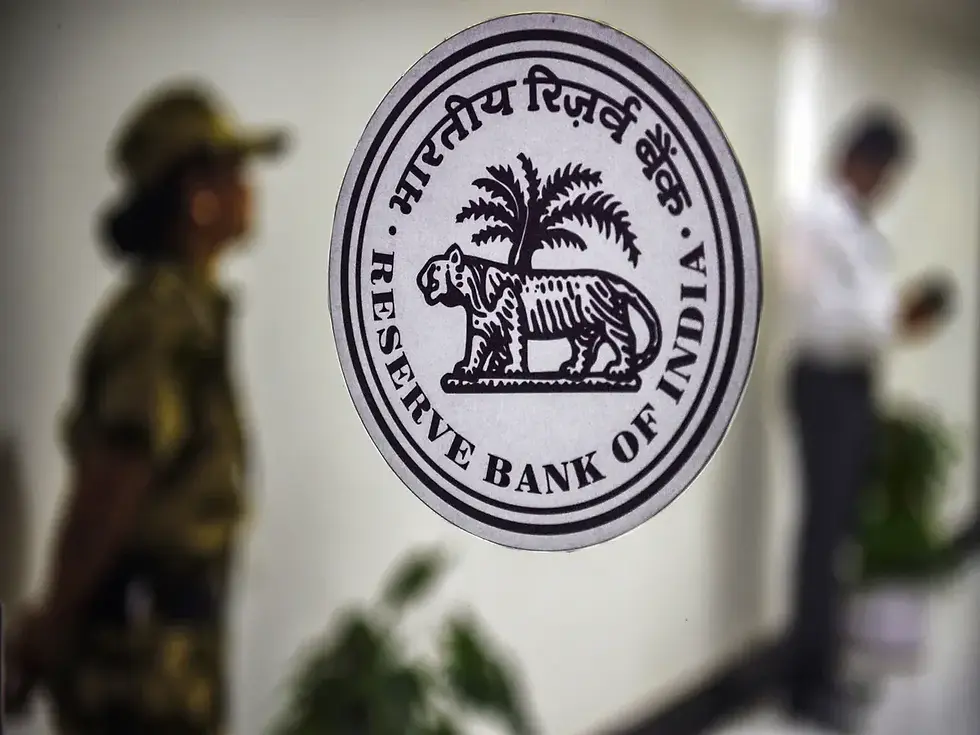RBI's 2025 Draft Directions: Transforming Co-Lending, Non-Fund Based Credit Facilities, and Securitisation of Stressed Assets
- Pick-An-Idea Social Media Marketers
- Apr 30
- 4 min read

The Reserve Bank of India (RBI) has released draft directions on April 9, 2025, inviting public and stakeholder comments on three significant areas: Co-Lending Arrangements (CLA), Non-Fund Based (NFB) Credit Facilities, and Securitisation of Stressed Assets (SSA). These drafts aim to modernize and unify the regulatory framework, enhancing transparency, risk management, and financial inclusion.
Co-Lending Arrangements (CLA): Expanding Collaborative Lending
The proposed CLA Directions seek to establish a comprehensive framework for co-lending, allowing various Regulated Entities (REs) such as Scheduled Commercial Banks (excluding Small Finance Banks, Local Area Banks, and Regional Rural Banks), All India Financial Institutions, and Non-Banking Financial Companies (including Housing Finance Companies) to collaborate in joint lending activities.
Key Highlights:
Applicability: The directions apply to all co-lending arrangements among permitted REs, excluding digital lending arrangements not involving co-lending, engagement of Business Correspondents, loan participation transactions, and peer-to-peer lending transactions already covered under other RBI directions. Loans exceeding INR 100 crore under multiple banking, consortium lending, or syndication are also excluded.
Definition: A 'Co-lending arrangement' is defined as an arrangement, formalized through an ex-ante legal agreement among permitted REs to jointly fund a loan portfolio in a pre-agreed proportion, involving revenue and risk sharing, with or without sourcing and management arrangements.
Governance and Documentation: REs must incorporate suitable provisions in their credit policies relating to CLAs, including internal limits, target borrower segments, due diligence of partner entities, customer service, and grievance redressal mechanisms. Agreements should detail terms such as borrower selection criteria, product lines, fees, responsibilities, and customer protection measures.
Pricing and Fees: The borrower's interest rate should be a blended rate, calculated as the weighted average of each lending RE's rate for a comparable borrower, proportional to its share of the loan. Fees payable to sourcing/servicing entities are outside the blended rate and should not involve credit enhancement or default loss guarantees unless specifically permitted.
Operational Controls: Transactions between REs and borrowers should be routed through an escrow account. In sourcing arrangements, loan servicing should be done directly by the borrower into the RE's bank account. REs must implement a business continuity plan to ensure uninterrupted service in case of CLA termination.
Default Loss Guarantee (DLG): REs involved in a CLA can provide DLG up to 5% of the outstanding loan portfolio under CLA or sourcing arrangements, governed by RBI's 'Guidelines on Default Loss Guarantee (DLG) in Digital Lending' issued on June 8, 2023.
Disclosures: REs are required to display their CLA partners and indicative blended rates on their websites. Quarterly financial disclosures should include details on CLAs, interest rates, fees, sector mix, loan performance, and DLGs.
Non-Fund Based (NFB) Credit Facilities: Standardizing Credit Instruments
The draft NFB Directions aim to create a unified regulatory framework for NFB facilities such as guarantees, letters of credit, co-acceptances, and partial credit enhancements, applicable to all REs including Commercial Banks (including RRBs and LABs), Primary (Urban) Co-operative Banks, State Co-operative Banks, Central Co-operative Banks, All India Financial Institutions, and all NBFCs including HFCs.
Key Highlights:
General Conditions: NFB facilities can only be issued on behalf of customers with an existing business relationship with the RE. Credit appraisal for NFB facilities should be as rigorous as for funded facilities.
Guarantees: Guarantees must be irrevocable and unconditional, with a clear mechanism for honoring them upon invocation. REs should avoid undue concentration of unsecured guarantees and establish internal ceilings.
Partial Credit Enhancement (PCE): Specified REs can provide PCE in the form of irrevocable contingent lines of credit for bonds issued by corporates or SPVs, enhancing credit ratings and facilitating better access to funds.
Disclosures: REs must prepare and publish standardized balance-sheet and maturity-ladder statements annually, clearly segregating secured and unsecured portions of all guarantees, acceptances, endorsements, and other contingent liabilities.
Securitisation of Stressed Assets (SSA): Facilitating Recovery and Risk Sharing
The SSA Directions propose a structured framework for securitizing pools of stressed assets, enabling REs to manage non-performing assets (NPAs) effectively and share recovery risks with investors.
Key Highlights:
Applicability: The directions apply to all SCBs (excluding RRBs), AIFIs, SFBs, and all NBFCs including HFCs.
Pool Composition: At least 90% of the total outstanding loan amount in the pool must consist of NPAs, both at the origination cut-off date and at any subsequent date when assets are added or removed.
Homogeneity: Pools should be homogeneous, not mixing personal loans and business loans to individuals or micro enterprises (not exceeding INR 50 crore) with other loan types.
Risk Retention: No mandatory minimum risk retention is required, except when the originator also acts as a Resolution Manager (ReM) or when due diligence is performed on a sample basis for small loans.
Pricing and Sale Mechanics: Assets can be sold to a Special Purpose Entity (SPE) only on a cash basis, with sale consideration received no later than the transfer date. External valuation reports are required for large loan pools.
Supporting Facilities: Credit enhancement, liquidity, underwriting, and servicing facilities can be provided, with credit enhancement limited to cover losses of the senior tranche only.
Resolution Manager (ReM): A ReM is responsible for administering resolution/recovery of underlying stressed exposures. For small loans, the ReM must be an RBI-regulated entity; for large loans, insolvency professionals or entities regulated by Indian financial sector regulators can be appointed.
Disclosures: Originators and SPEs must file quarterly returns with RBI detailing securitisation transactions. Offer documents should provide investors with relevant data and performance metrics of underlying exposures.
Conclusion
The RBI's draft directions for 2025 signify a progressive shift towards a more robust and transparent financial ecosystem. By standardizing co-lending practices, NFB credit facilities, and the securitisation of stressed assets, these guidelines aim to enhance financial inclusion, improve risk management, and provide REs with greater flexibility in managing their portfolios. Stakeholders are encouraged to provide feedback on these drafts by May 12, 2025, to contribute to the development of a resilient and inclusive financial framework.
Note: This blog is intended for informational purposes only and does not constitute legal advice. For specific guidance, please consult a qualified legal professional.


Comments